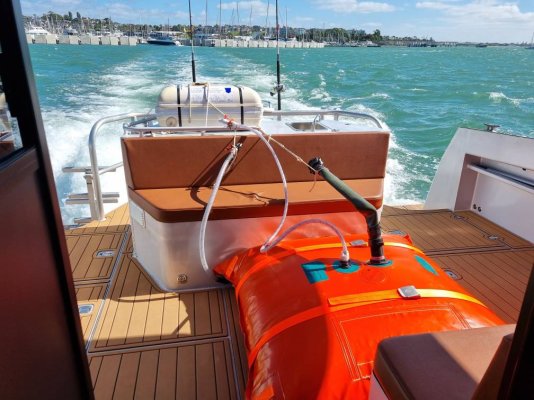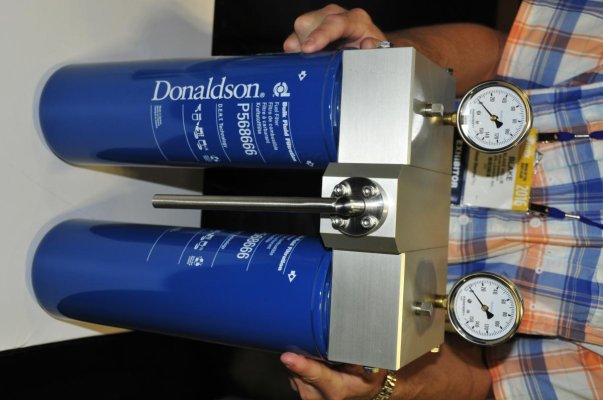sunchaser
Guru
- Joined
- Apr 9, 2008
- Messages
- 10,200
- Location
- usa
- Vessel Name
- sunchaser V
- Vessel Make
- DeFever 48 (sold)
Bladder and deck tanks are sometimes used to extend range for a delivery. They are a PITA. There are also concerns about trim given they are often placed in an open cockpit or Sundeck since few folks want them on their cabin sole. Transferring fuel in open water can be a challenge and is messy - most boats have deck-fills. Fuel bladders are pretty heavy and robust. Rolling up and stowing isn't as convenient as it sounds. Possible, but barely practical as a range extender. A year or so ago, someone asked about getting a Hatt 60-ish across the Atlantic as they were moving. That's a rare example where a bladder or barrels might make sense.
In my opinion, bladders and barrels are a good example of stuff that looks good on paper and should go no further.
Peter
It depends on the vessel and mission. We know people that have had as many as 12 50 gallon drums or the plastic enclosed totes carrying about 600 gallons.on the aft deck. In these cases I’m referring to long transpacific journeys.
The cases I’m referring to are +75’ Northern Marines or Nordhavns with very smart Captains or owners.
I’ve seen sail boats in the PNW with up to 10 5 gallon jerry cans lashed on deck. The distance between fuel fills exceeds their small tanks, plus they don’t like to raise sails.
Our DF 48 has two aft tanks at 100 g each. A 50 g drum or tote could easily fit above each tank and deck fill with no vessel overload issues.



